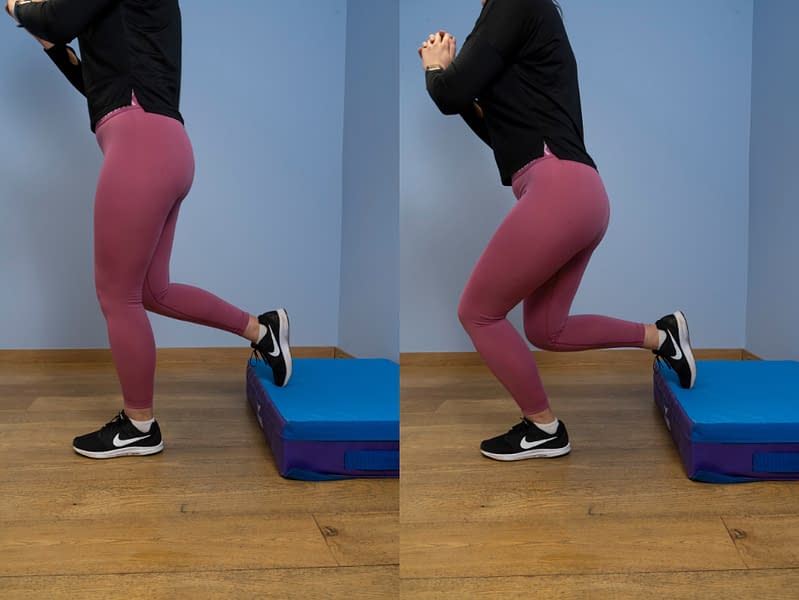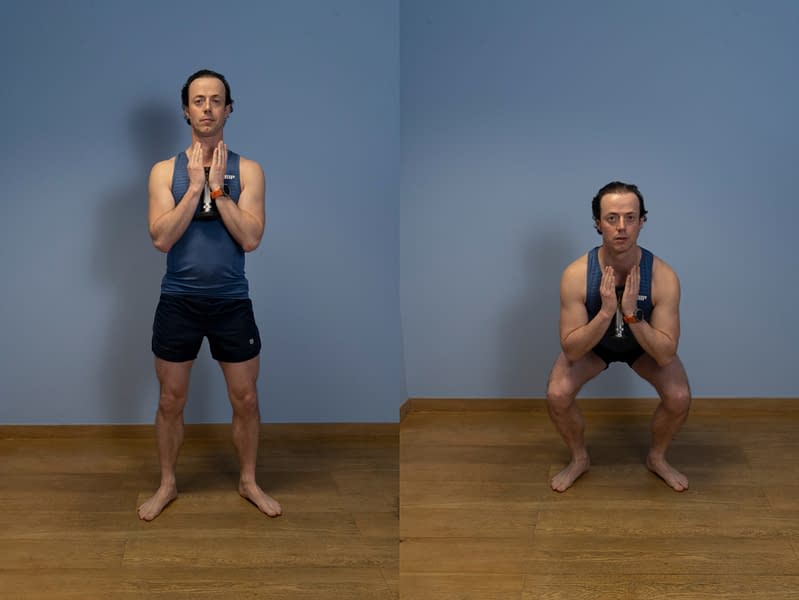Meniscus Injury Advanced Exercise Programme
Aim to perform this programme a minimum of once per day unless prescribed otherwise. As with any new exercise, start slowly (repetitions as able) and build up as you are able within the guidelines below.
Pain should not exceed 2/10 whilst completing this exercise programme.
1. Split squat
- For this exercise, you will need a secure raised surface behind you such as a small step.
- Stand upright in front of the surface facing away from it.
- Transfer your weight on to the target leg and place the foot of the trailing leg up on the small step.
- Bend the knee and hip of the standing leg so that your hips lower directly downwards to the point where the trailing knee is just off the floor.
- Hold for 3 seconds before squeezing the buttock and thigh muscles to straighten the standing leg – do not forcibly lock out the knee.
2. Balance and reach
- Start by standing with all the weight on one leg.
- Rest the other foot next to the standing foot for balance.
- Now with the non-standing leg reach out forwards (hovering just above the floor) as far as possible whilst at the same time bending the standing leg.
- Then return to the start position maintaining your balance.
- Repeat in a sideways and backwards direction and continue to do this in a cycle of the three movements only touching down if you start to lose your balance.
3. Weighted Squat
- Stand upright with your feet hip-width apart and a weight placed evenly across your shoulders (back squat) or holding it securely against your chest (goblet squat).
- Engage the abdominal region and in a controlled manner, sit back as if you are sitting into a chair.
- At the same time, your head and chest will come forwards to maintain your balance, aim to keep your back straight.
- Go down as far as you feel comfortable or until your thighs are parallel with the floor.
- Come back up to standing and repeat.
We recommend consulting a musculoskeletal physiotherapist to ensure exercises are best suited to your recovery. If you are carrying out an exercise regime without consulting a healthcare professional, you do so at your own risk. If you have any concerns whilst completing these exercises, please contact a healthcare professional.
More Plans
At this stage, exercises are focused on reducing stiffness often associated with the condition and helping to promote movement and blood flow that can, in turn, reduce any swelling that has occurred. Pain should not exceed 3/10 on your self-perceived pain scale whilst completing this exercise programme.
- 0
- 1
- 2
- 3
- 4
- 5
- 6
- 7
- 8
- 910
Here the emphasis is on starting to regain strength around the hip and thigh to reduce the stress on the knee. Pain should not exceed 4/10 on your self-perceived pain scale whilst completing this exercise programme.
- 0
- 1
- 2
- 3
- 4
- 5
- 6
- 7
- 8
- 910


